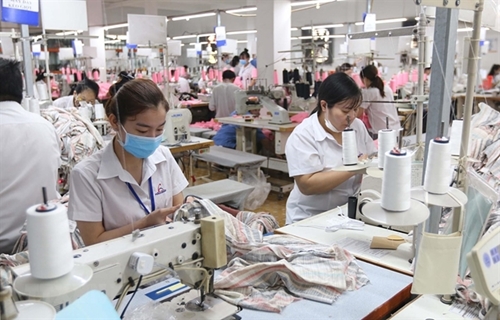Firms may still have some breathing space having stocked up before the Lunar New Year holidays, but things could get tricky soon. Some 80 percent of raw materials used in Vietnam’s rubber and plastic industry were imported from China, said president of Ho Chi Minh City’s rubber and plastic association, Nguyen Quoc Anh.
If China’s industries could not resume operations by the end of February, firms must start looking to alternative sources, possibly the Republic of Korea and the EU. Longer transport distances and higher prices, however, would likely result in higher costs and massive disruption to operations.
    |
 |
|
Workers at a textile company in Go Vap District, HCM City. |
Anh said the outbreak had already started hurting a number of Vietnamese firms such as automakers Hyundai and Kia.
Anh said looking for other partners at this point was near impossible as firms would be unable to negotiate new contracts within a short amount of time due to the auto industry’s complexity and numerous technical barriers.
Similarly, textile firms might start experiencing a shortage of raw materials by the second quarter, said Pham Xuan Hong, president of HCM City’s textile association.
Chinese firms had already said there would be no outgoing shipments before the end of February. As Vietnamese firms rely on China for 30 to 40 percent of input materials, production would likely be hampered.
Hong advised firms to pool their resources to keep their workshops running through March and April while talking to suppliers in Malaysia and India.
“This is, however, only a temporary solution as it will be extremely difficult to replace China as our main supplier of raw input materials,” he said.
The Vietnam Textile and Apparel Association has urged members to compile reports on the impact of the virus outbreak on their operations and to keep up to date with the latest developments.
Source: VNA